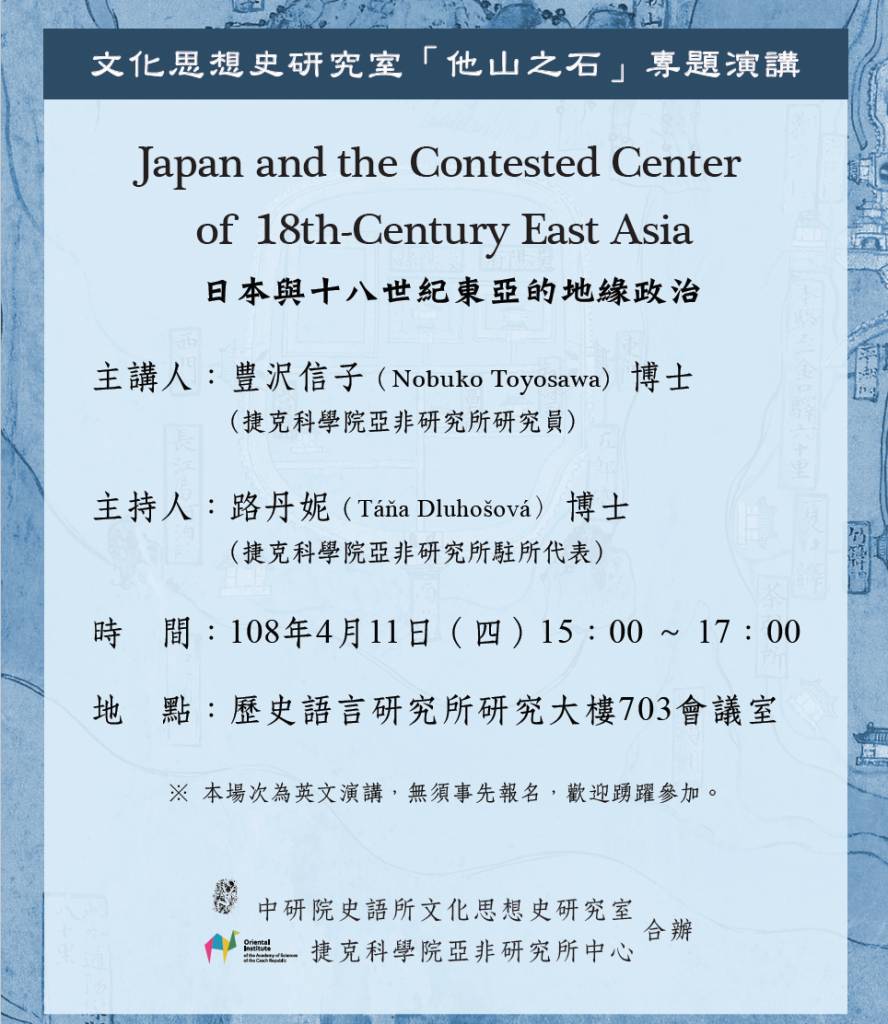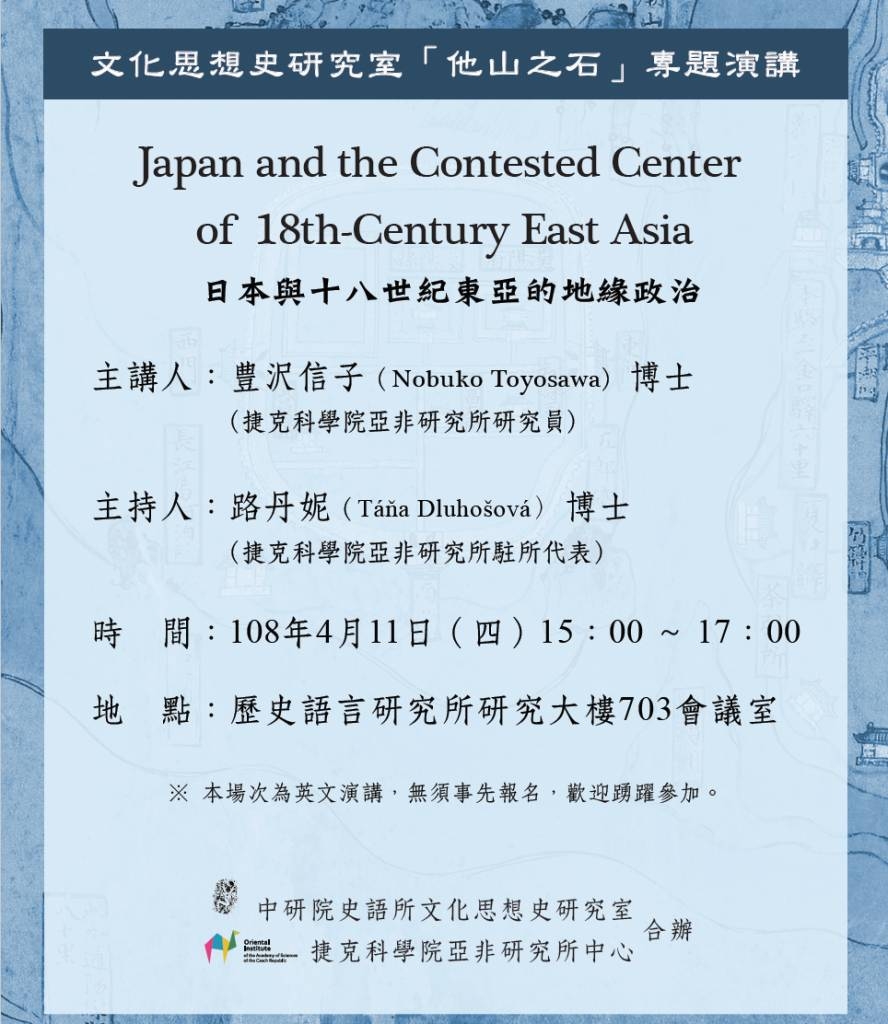Title: Japan and the Contexted Center of 18th-Century East Asia Speaker: Nobuko Toyosawa (Oriental Institute, CAS) Time: April 11, 2019, 15:00–17:00 Venue: Conference room 703, Institute of History and Philology, Academia Sinica Abstract: Eighteenth century Japan is known for a rise of publishing industry and subsequent spread of...
Title: Japan and the Contexted Center of 18th-Century East Asia
Speaker: Nobuko Toyosawa (Oriental Institute, CAS)
Time: April 11, 2019, 15:00–17:00
Venue: Conference room 703, Institute of History and Philology, Academia Sinica
Abstract:
Eighteenth century Japan is known for a rise of publishing industry and subsequent spread of sociability through popular print media. This presentation explores what representative qualities and characteristics were equated as Japanese through the analysis of print culture. I first examin a guidebook from the series called The Illustrated Scenic Beauty of Japan(Fusō meishōzu, 1713–1728), published by one of the most prestigious bookstores in Kyoto called Ryūshiken. This publication had a lasting impact by designating a certain set of remarkably beautiful views of Japan, three of whom are known as the “three most scenic views of Japan” (Nihonsankei) today. In the second part of the presentation, I analyze The Battles of Coxinga(Kokusen’ya kassen, 1715), followed by its sequel account, The Battles of Coxinga in Later Days(Kokusen’ya gonichi kassen). Drawing from a real historical figure, Zheng Chenggong (1624–1662) otherwise known as Coxinga, who was the half-Japanese, half-Ming Chinese warrior, a smuggler, pirate, or the master of the seas, playwright Chikamatsu Monzaemon (1653–1725) produced the story of a revival of the Ming dynastic rule in collaboration with Japan for a jōruripuppet play.
My analysis centers on the ideas of Japanese-ness presented in these contemporary texts by historicizing the time of production of these texts. Given that certain virtues and values held particular importance in the Chikamatsu’s texts, I ask what was at stake in terms of moral and political authority of the shogunate. In light of the changing visions of ideal leadership when the Great Peace under heaven (tenkataihei) in Tokugawa Japan faced serious economic and diplomatic challenges, I demonstrate the ways the populace came to partake in thinking about legitimacy of political authority. The audiences of these texts were not only the social elites but also merchants, farmers, and women and children, which means that topic of leadership was no longer monopolized by Confucian scholars and officials, and the populace obtained such information through the vehicle of popular media. Appearing in different literary genres of guidebooks and jōruritexts, the presentation tries to capture how emergent visions for Japan’s communal identity intersected with the geo-political shift in East Asia, as well as Japan’s domestic challenges.




